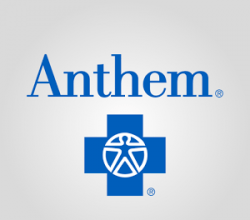 Provider Onboarding Enables Revenue Cycle Management
Provider Onboarding Enables Revenue Cycle Management
Revenue Cycle Management (RCM) has been a major focus within the healthcare industry for some time. Simply stated, the activities involved in RCM drive getting paid efficiently.
 Provider Onboarding Enables Revenue Cycle Management
Provider Onboarding Enables Revenue Cycle Management
Revenue Cycle Management (RCM) has been a major focus within the healthcare industry for some time. Simply stated, the activities involved in RCM drive getting paid efficiently. While that sounds pretty straight forward, the complexities involved in actually getting paid are not trivial. For those on the care delivery side of the business (e.g. hospitals, clinics, physician practices), substantial efforts have been made to re-engineer, automate, outsource, or otherwise optimize patient billing and collections processes. These investments have improved cash flow, reduced denials, and in many cases, substantially improved the financial performance of the organization. Despite the significant advances, many of these organizations remain shackled with lacking or dysfunctional provider onboarding programs. The irony in this lies in the fact that it is the onboarding process that enables a new provider joining a healthcare delivery organization to become eligible for payor reimbursement in the first place.
“Onboarding” describes the sequence of activities involved in transitioning a newly hired or contracted healthcare provider from recruitment to becoming fully billable or reimbursable. Typically, this includes hiring and orientation, initial credentialing, facility privileging, committee/board approvals, and payor enrollment. Completing these activities can draw out over a 90 – 180 day timeframe for many organizations. Larger systems and networks where providers are routinely privileged across multiple facilities may see these numbers drift well into in the 200s.

On average, every work day that a newly hired or contracted provider remains in the onboarding process, they are unable to fully enter the revenue cycle and forfeit approximately $6,000 in billings. For an organization that hires 50 new privileged providers per year, reducing their onboarding cycle time by even 20 billable days may drive upwards of $6,000,000 directly to their bottom line (50 hires X 20 days X $6,000 forfeited revenues).

Improvements to the onboarding process can take many forms. In general, healthcare delivery organizations seek to reduce cycle time, improve revenues, lower costs, and strengthen provider engagement. Smaller organizations can benefit by streamlining, automating, and integrating siloed components of the process to eliminate redundancy, improve communications, and reduce administrative burden. Larger firms can establish centralized or regionalized shared service centers that manage onboarding activities across the enterprise. In both cases, these efforts can be undertaken within a larger strategy of improving and modernizing a firm’s overall healthcare quality assurance practices.
Traditionally, RCM strategies have focused on patient billing. Given the financial impact that improving an organization’s onboarding processes can have, health leaders must consider how such an initiative integrates with their firm’s overall revenue cycle management strategy.


 Provider Onboarding Enables Revenue Cycle Management
Provider Onboarding Enables Revenue Cycle Management 






